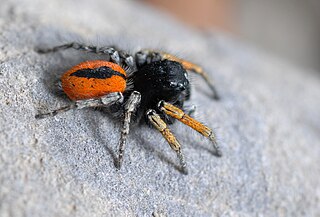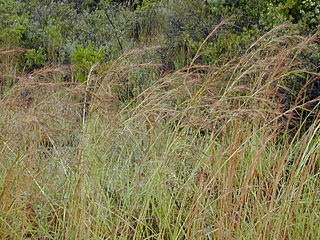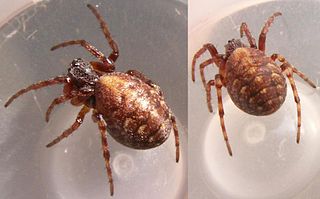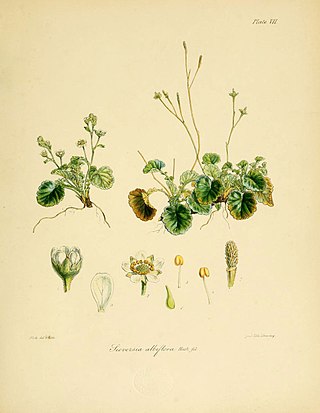
Dendrobium is a genus of mostly epiphytic and lithophytic orchids in the family Orchidaceae. It is a very large genus, containing more than 1,800 species that are found in diverse habitats throughout much of south, east and southeast Asia, including China, Japan, India, the Philippines, Indonesia, Australia, New Guinea, Vietnam and many of the islands of the Pacific. Orchids in this genus have roots that creep over the surface of trees or rocks, rarely having their roots in soil. Up to six leaves develop in a tuft at the tip of a shoot and from one to a large number of flowers are arranged along an unbranched flowering stem. Several attempts have been made to separate Dendrobium into smaller genera, but most have not been accepted by the World Checklist of Selected Plant Families.

Cymbidium, commonly known as boat orchids, is a genus of evergreen flowering plants in the orchid family Orchidaceae. Orchids in this genus are epiphytic, lithophytic, terrestrial or rarely leafless saprophytic herbs usually with pseudobulbs. There are usually between three and twelve leaves arranged in two ranks on each pseudobulb or shoot and lasting for several years. From one to a large number of flowers are arranged on an unbranched flowering stem arising from the base of the pseudobulb. The sepals and petals are all free from and similar to each other. The labellum is significantly different from the other petals and the sepals and has three lobes. There are about fifty-five species and sixteen further natural hybrids occurring in the wild from tropical and subtropical Asia to Australia. Cymbidiums are well known in horticulture and many cultivars have been developed.
Erythrococca is a plant genus of the family Euphorbiaceae, first described in 1849. It is native to Africa and the Arabian Peninsula.
Melanolepis is a plant genus of the family Euphorbiaceae, first described as a genus in 1856. It is native to Southeast Asia, New Guinea, and some islands of the western Pacific.
- Melanolepis multiglandulosa(Reinw. ex Blume) Rchb. & Zoll - Nansei-shoto, Mariana Islands, Solomon Islands, Bismarck Archipelago, New Guinea, Maluku, Sulawesi, Philippines, Lesser Sunda Islands, Java, Sumatra, Borneo, Thailand, Malaysia, Taiwan
- Melanolepis vitifolia(Kuntze) Gagnep. - Vietnam, Cambodia

Lepanthes is a large genus of orchids with about 800–1000 species, distributed in the Antilles and from Mexico through Bolivia. The genus is abbreviated in horticultural trade as Lths. Almost all the species in the genus are small and live in cloud forests. Babyboot orchid is a common name.

Philaeus is a genus of jumping spiders that was first described by Tamerlan Thorell in 1869. Philaeus maoniuensis was moved to genus Yllenus in 2003.

Hyparrhenia is a genus of grasses. Many species are known commonly as thatching grass.
Cleistachne is a genus of African and Asian plants in the grass family. The only known species is Cleistachne sorghoides, native to Eastern Africa and Southeastern Africa, and parts of Asia.

Harpachne is a genus of Asian and African plants in the grass family.

Iseilema, commonly known in Australia as Flinders grass, is a genus of Asian and Australian plants in the grass family.
Melanocenchris is a genus of Asian and African plants in the grass family.

Campanophyllum is a fungal genus in the family Cyphellaceae. The genus is monotypic, containing the single species Campanophyllum proboscideum, found in Costa Rica. The genus was circumscribed in 2003 to accommodate the species formerly known as Lentinus proboscoides.
Vossia is a monotypic genus in the grass family, found in Asia and Africa. The only known species is Vossia cuspidata, an aquatic grass native to Africa, and to Assam, Bangladesh, and northern Indochina. The common name is hippo grass.
Melanolepsis multiglandulosa is a plant species of the family Euphorbiaceae, first described in 1826. It is native to Nansei-shoto, Mariana Islands, Solomon Islands, Bismarck Archipelago, New Guinea, Maluku, Sulawesi, Philippines, Lesser Sunda Islands, Java, Sumatra, Borneo, Thailand, Malaysia and Taiwan.
Heinrich Leonhards Skuja (1892–1972) was a botanist specialist of algae.
Clarkometra elegans is a species of feather star, a type of crinoid, in the family Colobometridae. It is found from South West Mindanao in the Philippines to the Bonin Islands, Japan. It occurs at a depth ranging from 72 to 80 m.

Cercidia is a genus of orb-weaver spiders first described by Tamerlan Thorell in 1869. As of April 2019 it contains only three species.

Geum albiflorum is a plant in the rose family, Rosaceae family, found in the Auckland Islands.
Göran Dillner was a Swedish mathematician.
Rhabdotylus is a genus of horse flies in the family Tabanidae.









